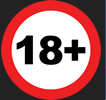 |
RacingBetter News |
| Thursday 29th April 2021 | |
Pace In Horse Racing: The Most Overlooked Aspect By Punters?
It is sometimes said that pace is the most underestimated aspect in horse racing but how important is it? We’re going to be using some data supplied by our friends over at geegeez. Using their ‘Query Tool’ we’ll examine whether certain run styles are inherently advantageous in horse racing and which courses might have the strongest pace biases.
What Early Position is Most Advantageous?
First of all, let’s look at pace in general. In the past 5 years there have been a total of 33,738 handicaps run in the UK and Ireland with 6 or more runners going to post.

This data shows that the closer you are to the early pace, the more likely you are to win. Front runners have the best win percentage of any run style (14.91%), followed by prominent (11.42%), then mid division (8.11%) with hold up performers doing worst of all with a win strike rate of 7.25%. This means that front runners have more than twice the success of those held up, relatively speaking.
This is a huge sample size so there is no real need to dig too much further but if any clarification was required, the place percentage data also follows the exact same trajectory.
What is quite remarkable is the fact that backing every single front runner to level stakes would have produced a hefty profit both for win only and for each way wagers. The Win PL for front runners is 6,911.01 implying a profit of £6,911 if you had backed every horse that led early during the time frame to a £1 stake. The each way profit would have been £8,433.21.
Other data worth considering is the A/E (Actual vs Expected) which shows how outcomes have performed against market expectations and also IV (Impact Value) which shows how often something is happening relative to the other possible outcomes. For both metrics 1 is the benchmark so scores above 1 are good, scores less than 1 are substandard. Again, both metrics steadily decline the further back in the field a runner is placed.
There is clearly a strong front runner bias in horse racing and a disadvantage against those who tend to be delivered late.
What Are The Best Racecourses For Front Runners?
So we’ve established an advantage towards front runners in horse racing but which venues give front runners the biggest advantage? This data once again looks at handicap races with 6 or more runners.

Out of all the UK and Irish courses it appears Sedgefield has the best strike rate for front runners with 22.47% of early leaders emerging victorious. The next four courses on the list are all exclusively flat racing courses, with Ripon, Epsom, Beverley and Chester all suiting front runners extremely well.
If looking at each way strike rates of front runners the ranking is largely similar again, which makes the data more reliable, but it’s actually Ripon that comes out on top this time, just ahead of Sedgefield.
The best A/E score for front runners amongst the racecourses comes at Cork, which wasn’t in the top 20 courses for win percentage. This tells us that whilst front runners may not be quite so prolific at Cork, they are actually most underestimated by bookmakers. This makes Cork the best value venue at which to back front runners and over the past five years backing all front runners at Cork would have yielded an ROI of 51.56%. Ripon is next best for A/E again backing up the fact that Ripon is a very strong course for early pace.
What Are The Best Racecourses For Hold Up Horses?
Not every course can provide the perfect setup for front runners so let’s take a look at the best racecourses for horses that like to be ridden patiently.

A nice mix of flat and national hunt courses once again and the best win percentage for hold up performers comes at Yarmouth with a strike rate of 12.23%. That compares very favourably with the UK and Irish average of 7.25% but is still below the UK and Irish average for front runners which is 14.91%.
Other courses where hold ups perform well include Ffos Las, Huntingdon and Towcester all of which have a 10%+ win percentage for runners that are held up.
Yarmouth (31.11%) and Towcester (30.43%) are clear top when it comes to looking at the place percentages for those patiently ridden. That’s still a poor place strike rate compared to the 46.51% place percentage for front runners at Ripon.
Remarkably no course in the past five years has produced a level stakes profit for hold up performers when looking at 6+ runner handicaps. It has been previously mentioned that A/E takes into account market expectations and that a score below 1 is substandard. Yarmouth has the best A/E for hold ups but that’s still just 0.97, meaning at the track that sees them to their very best effect they still perform below market expectation.
What Distances Suit Front Runners Best?
Distance can also be an important factor when it comes to deciding how much of a bias there is towards pace in horse racing.

Again, looking at all UK and Irish 6+ runner handicaps in the past five years, but this time just flat races to more clearly illustrate the point, it’s evident that the pace bias towards front runners is greater at shorter distances.
The 5.5f distance is clear when it comes to win percentage (25.25%), ahead of 5f which has a win strike rate of 18.55%. The reason that front runners do so well at 5.5F is most of those races have come at Chester, a course already noted as being a very strong front runners’ course.
The four best win percentages all come at 7f or below and in general the further the distance, the less of an advantage the front runners have. 6.5f is a distance where front runners seem to perform relatively poorly compared to other similar distances. The reason for this is that distance is most commonly used by Doncaster, a course that has already been noted as being suited to hold up horses.
It's interesting to note that front runners do better over 10f (14.49%) than 8f (13.83%). A fair few of those mile races will have been run at straight courses, which can suit the more patiently ridden types, whilst pretty much all 10f races will be run around a bend (Newmarket being an exception). Racing around a bend allows pacesetters to slow the pace and stack those up in behind. Jockeys are also keen not to be caught wide around a bend so they may sacrifice position in order to cover less ground, which again gives those near the head of affairs an advantage over those in behind.
There are plenty of factors that influence just how much of a bias front runners can have and the course and distance are two of the biggest factors. Jockeys, field sizes, draw and going can also impact the success rate of pace in horse racing.
Front runners don’t always have an advantage in horse racing. There are courses where patiently ridden horses can do just as well, or even better. Also when there are multiple pacemakers in a field they can cut each others’ throats at the head of affairs and set things up for those in behind.
One place you certainly want to be interested in front runners though is Kempton’s 5f course. A massive 32.69% of front runners win here and 65.38% go on to finish in the money. No other course and distance that has hosted more than 10 races in the past five years has a stronger win percentage for front runners. They unfortunately don’t host a huge amount of contests over the minimum distance but when they do, take note of those front runners!
*All data correct as of April 2021.







